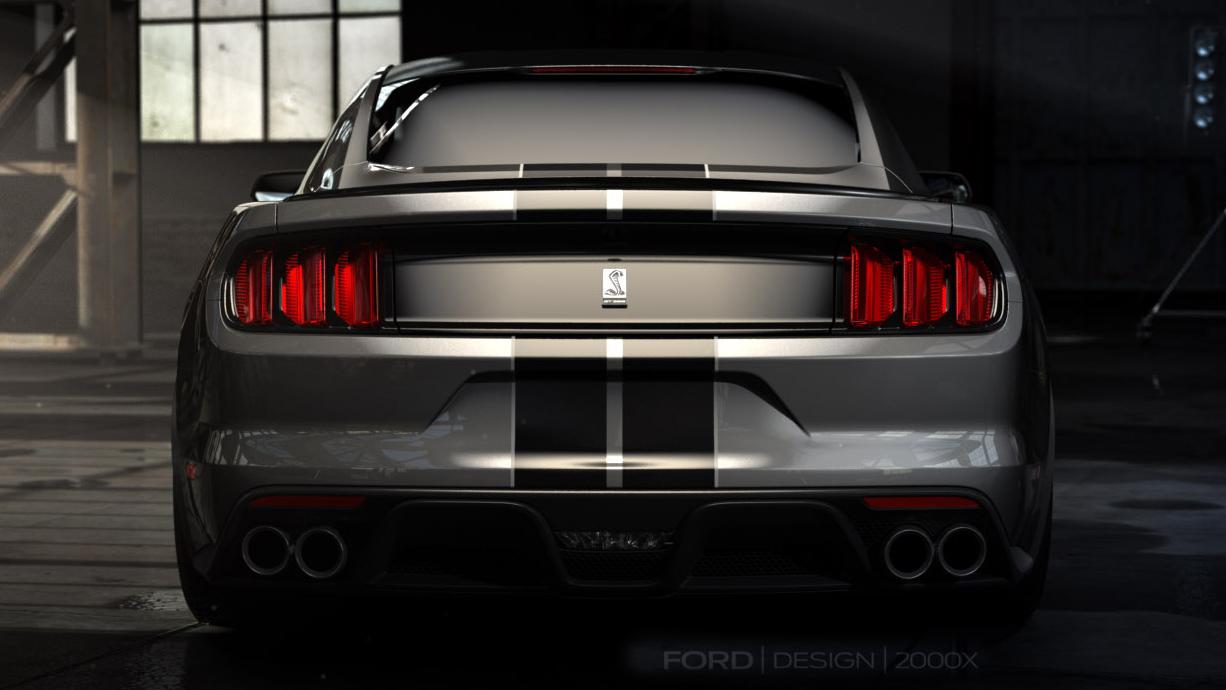Capping off a year of 50th anniversary celebrations, Ford unveiled the first high-performance version of the all-new sixth-generation Mustang today ahead of the 2014 Los Angeles Auto Show.
Surprising no one after months of speculation, that car is the Shelby GT350, and it seeks to be a more well-rounded performance car than the outgoing GT500.
Starting under the hood, the GT350 features a new 5.2-liter V8 that produces “more than” 500 hp and at least 400 pound-feet of torque and is mated to a six-speed manual transmission.
That’s a little less than the 600 hp originally predicted, but Ford says the 5.2-liter is the most powerful naturally-aspirated production engine it’s ever built.
It’s still not as powerful as the 2014 GT500’s 662-hp 5.8-liter supercharged V8, but sometimes how that power is applied is more important.
Ford says the new engine’s broad torque curve and free-revving nature will make it more usable.
Ford seems to be going for a more balanced approach here, combining aspects of the previous-generation GT500 and the more handling-focused Boss 302.
That’s also apparent in the choice of suspension. The GT350 is the first Ford product to get magnetic dampers, which use fluid filled with iron particles to precisely control stiffness.
Running an electrical current through the fluid changes its characteristics, making a switch from soft to firm damping near instantaneous. Similar systems have featured on Corvettes and Ferraris for years.
Naturally, the styling also gets an attitude adjustment, as seen in these initial CGI images.
Changes include an aluminum hood designed to maximize engine cooling, a more aggressive front fascia, and widened fenders to accommodate model-specific 19-inch wheels. At the back, there’s a rear diffuser and lip spoiler, two items no self-respecting performance car can do without these days.
Like the base Mustang, the GT350 looks very modern, but there are still plenty of styling cues to tie it to its predecessors – especially if you order the racing stripes.
The interior gets a similar reworking, with GT350-specific Recaro sport seats and a flat-bottom steering wheel. The chrome and other brightwork were even toned down to reduce sun glare.
There’s still plenty of tech. A driver control system includes five modes for a variety of vehicle parameters, including throttle mapping, suspension, and stability and traction control thresholds. There’s also a Tech Package that adds MyFord Touch infotainment and a Shaker audio system.
The Ford Shelby GT350 Mustang will slither into dealers next year, where it will face some tough competition.
From the 707-hp Dodge Challenger SRT Hellcat to the track-focused Chevrolet Camaro Z/28, we’re in the midst of a muscle-car renaissance, and we can’t wait to see how Ford’s latest effort stacks up.
Editors' Recommendations
- Ford unveils all-electric Mustang Mach-E
- Why Ford chose a dual-clutch transmission for the Shelby GT500 Mustang




